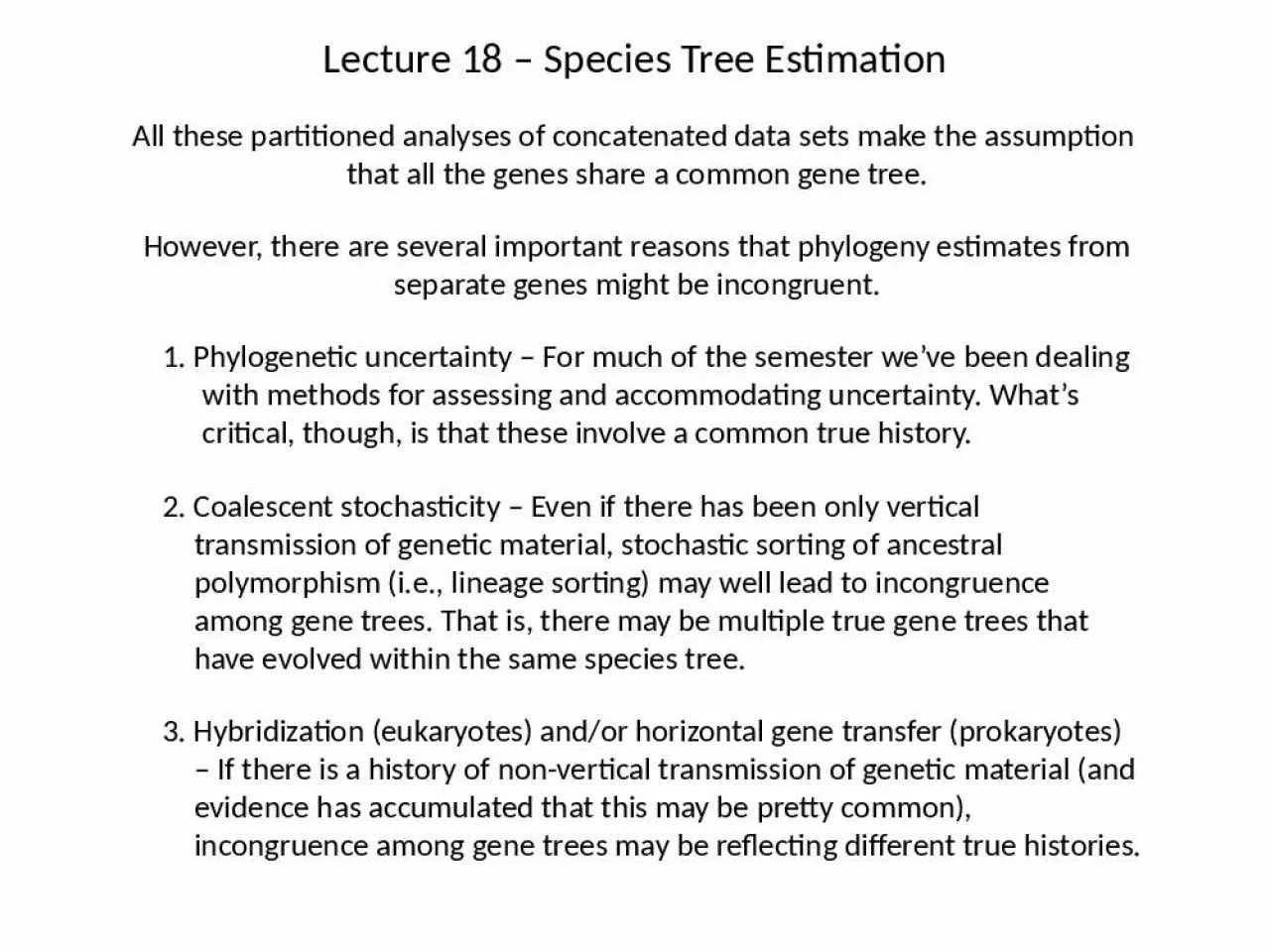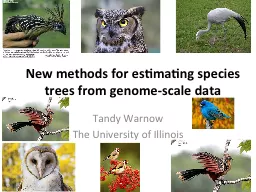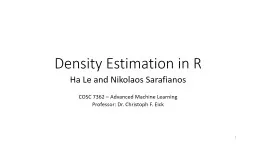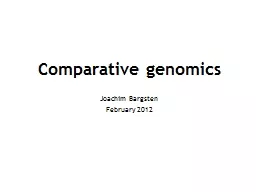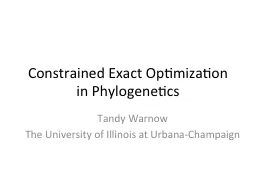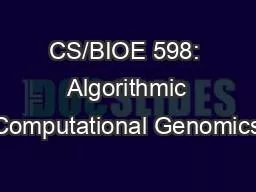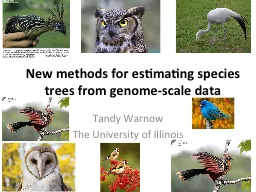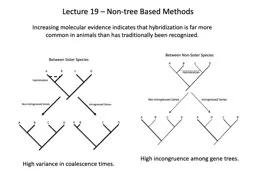PPT-Lecture 18 – Species Tree Estimation
Author : belinda | Published Date : 2022-05-17
All these partitioned analyses of concatenated data sets make the assumption that all the genes share a common gene tree However there are several important reasons
Presentation Embed Code
Download Presentation
Download Presentation The PPT/PDF document "Lecture 18 – Species Tree Estimation" is the property of its rightful owner. Permission is granted to download and print the materials on this website for personal, non-commercial use only, and to display it on your personal computer provided you do not modify the materials and that you retain all copyright notices contained in the materials. By downloading content from our website, you accept the terms of this agreement.
Lecture 18 – Species Tree Estimation: Transcript
Download Rules Of Document
"Lecture 18 – Species Tree Estimation"The content belongs to its owner. You may download and print it for personal use, without modification, and keep all copyright notices. By downloading, you agree to these terms.
Related Documents

